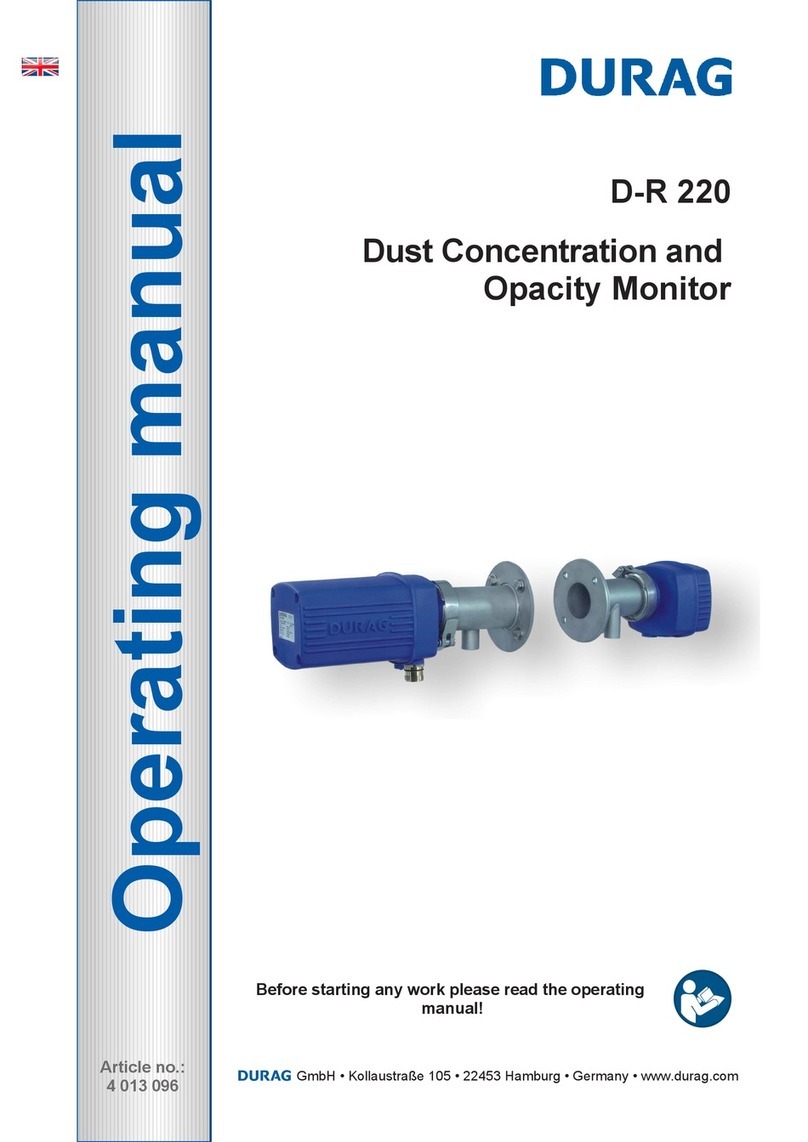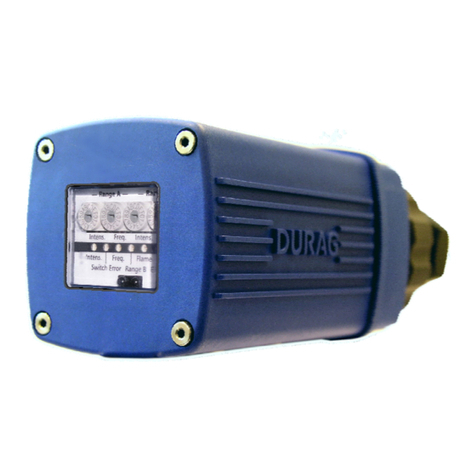
Contents
6D−R 800
Figure 7.13: Dimensional drawing (optional) weather protection hood .................................................... 79
Figure 7.14: Dimensional drawing (optional) weather protection hood for purge air heater .................... 80
Figure 7.15: Activation of the Modbus terminating resistor on the D−R 800 printed circuit board no. 2.. 83
Figure 8.1: Menu structure: vertical: Main menu ...................................................................................... 98
Figure 8.2: Menu structure, horizontal: submenu..................................................................................... 99
Figure 8.3: Menu, edit mode, example: Edit number ............................................................................. 100
Figure 8.4: Menu, edit mode, example: parameterisation of temperature measurement ...................... 101
Figure 8.5: Range switch-over - output ranges ...................................................................................... 108
Figure 8.6: Filter installation for checking the linearity ........................................................................... 117
Figure 9.1: Miniature fuse holder in the supply unit D−R 800 ................................................................ 121
Figure 9.2: Diaphragm openings on the measuring probe..................................................................... 122
Figure 9.3: Cleaning the optics on the measuring probe........................................................................ 123
Figure 9.4: Probe cap with light trap....................................................................................................... 123
Figure 9.5: Exchanging the filter (supply unit) ........................................................................................ 124
Figure 9.6: Overheating protection......................................................................................................... 125
Figure 11.1: Menu structure D−R 800 part 1/3....................................................................................... 137
Figure 11.2: Menu structure D−R 800 part 2/3....................................................................................... 138
Figure 11.3: Menu structure D−R 800 part 3/3....................................................................................... 139
Figure 13.1: Declaration of Conformity................................................................................................... 143
Figure 13.2: QAL1 to DIN EN 14181 and DIN EN 14956 page 1/2 ....................................................... 144
Figure 13.3: QAL1 to DIN EN 14181 and DIN EN 14956 page 2/2 ....................................................... 145
Tables
Table 6.1: Checklist: Preconditions for the operation of the D−R 800 ..................................................... 49
Table 6.2: Selection of the correct flange / lance length .......................................................................... 50
Table 6.3: Terminal assignment ............................................................................................................... 57
Table 6.4: Selection of the purge air restrictor ......................................................................................... 59
Table 6.5: Checklist: Preconditions for commissioning the D−R 800....................................................... 61
Table 7.1: LED display for the purge air monitoring unit .......................................................................... 75
Table 7.2: Possible causes / remedies for "Error during device adjustment"........................................... 76
Table 7.3: Teminal assignment for Modbus ............................................................................................. 83
Table 7.4: Abbreviations and terms in the tables ..................................................................................... 85
Table 7.5: Data formats in the tables........................................................................................................ 86
Table 7.6: Unsupported function codes.................................................................................................... 86
Table 7.7: General parameters and functions .......................................................................................... 90
Table 7.8: Status codes............................................................................................................................ 91
Table 7.9: D−R 800 Messages................................................................................................................. 92
Table 7.10: D−R 800 Parameters and functions ...................................................................................... 93
Table 8.1: Value pairs table from gravimetric comparison measurement .............................................. 114
Table 8.2: Value pairs table for the calibration function ......................................................................... 115
Table 8.3: Table for documentation of the calibration as it is being performed ..................................... 117
Table 9.1: Messages from the measuring unit ....................................................................................... 126
Table 9.2: Messages from the measuring unit (causes and remedies) ................................................. 128
Table 10.1: Overview of control parameters for code level 1................................................................. 135






























